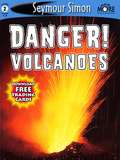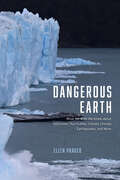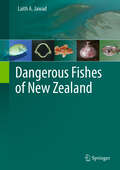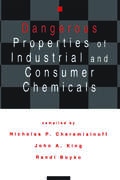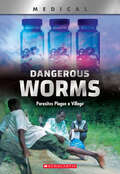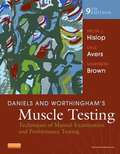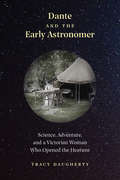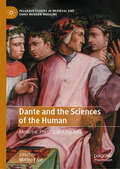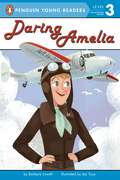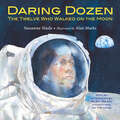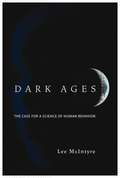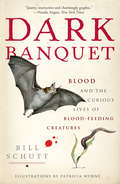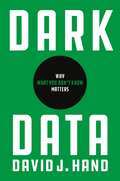- Table View
- List View
Dance to the Tune of Life
by Denis NobleIn this thought-provoking book, Denis Noble formulates the theory of biological relativity, emphasising that living organisms operate at multiple levels of complexity and must therefore be analysed from a multi-scale, relativistic perspective. Noble explains that all biological processes operate by means of molecular, cellular and organismal networks. The interactive nature of these fundamental processes is at the core of biological relativity and, as such, challenges simplified molecular reductionism. Noble shows that such an integrative view emerges as the necessary consequence of the rigorous application of mathematics to biology. Drawing on his pioneering work in the mathematical physics of biology, he shows that what emerges is a deeply humane picture of the role of the organism in constraining its chemistry, including its genes, to serve the organism as a whole, especially in the interaction with its social environment. This humanistic, holistic approach challenges the common gene-centred view held by many in modern biology and culture.
Dance, Place, and Poetics: Site-specific Performance as a Portal to Knowing (Palgrave Studies in Movement across Education, the Arts and the Social Sciences)
by Celeste Nazeli SnowberThis book explores the relationship between the body, ecology, place, and site-specific performance. The book is situated within arts-based research, particularly within embodied inquiry and poetic inquiry. It explores a theoretical foundation for integration of these areas, primarily to share the lived experiences, poetry and dance which have come out of decades of sharing site-specific performances.
Dancing Cockatoos and the Dead Man Test: How Behavior Evolves And Why It Matters
by Marlene ZukA lively exploration of animal behavior in all its glorious complexity, whether in tiny wasps, lumbering elephants, or ourselves. For centuries, people have been returning to the same tired nature-versus-nurture debate, trying to determine what we learn and what we inherit. In Dancing Cockatoos and the Dead Man Test, biologist Marlene Zuk goes beyond the binary and instead focuses on interaction, or the way that genes and environment work together. Driving her investigation is a simple but essential question: How does behavior evolve? Drawing from a wealth of research, including her own on insects, Zuk answers this question by turning to a wide range of animals and animal behavior. There are stories of cockatoos that dance to rock music, ants that heal their injured companions, dogs that exhibit signs of obsessive-compulsive disorder, and so much more. For insights into animal intelligence, mating behavior, and an organism’s ability to fight disease, she explores the behavior of smart spiders, silent crickets, and crafty crows. In each example, she clearly demonstrates how these traits were produced by the complex and diverse interactions of genes and the environment and urges us to consider how that same process evolves behavior in us humans. Filled with delightful anecdotes and fresh insights, Dancing Cockatoos and the Dead Man Test helps us see both other animals and ourselves more clearly, demonstrating that animal behavior can be remarkably similar to human behavior, and wonderfully complicated in its own right.
Dandelion Adventures
by L. Patricia KiteThe wind blows, and several tiny dandelion seed parachutes fly into the air. One lands in a sidewalk crack, another at the edge of a forest, while three others land in a garden, a park, and on a muddy shore. One seed lands on a ship and sails off to a foreign land. The last one lands in a schoolyard, where it takes root and matures. A child puffs on the feathery white ball and seventy little seed parachutes fly away--where might they land? In simple words and beautiful pictures, the story of how this most widespread of weeds regenerates is unfolded for young readers.
Danger! Volcanoes
by Seymour SimonSeeMore about volcanoes - from powerful explosions to flowing rivers of hot, fiery lava - in this book from award-winning science author Seymour Simon. With fascinating facts and amazing images, Simon presents an irresistible invitation to growing readers to question, explore and discover the exciting world around them, to learn the causes of volcanoes, how they build up the surface of the earth and what to do if you are near an eruption.
Dangerous Animals (Professor Hoot's Science Comics #3)
by Greta BirchEvery day brings a new adventure for Professor Hoot - and a new learning experience. At sunrise, Professor Hoot sets off to find out all about the most dangerous animals on the planet, and narrowly avoids becoming someone's lunch! From venomous snakes to toothy sharks and fearsome lionesses, discover the deadly bites, killer claws and surprising skills animals use to attack their prey - and warn others away.An entertaining comic strip approach to KS1 science topics, Professor Hoot's Science Comics are accessible and full of fun. Each book is an adventure and a chance for readers to learn something new, before testing their knowledge at the end of each book in Professor Hoot's quiz. Collect each adventure: Big Machines; Dangerous Animals; Dinosaurs; Robots and AI; Space; Volcanoes and Earthquakes.
Dangerous Earth: What We Wish We Knew about Volcanoes, Hurricanes, Climate Change, Earthquakes, and More
by Ellen PragerThe Earth is a beautiful and wondrous planet, but also frustratingly complex and, at times, violent: much of what has made it livable can also cause catastrophe. Volcanic eruptions create land and produce fertile, nutrient-rich soil, but they can also bury forests, fields, and entire towns under ash, mud, lava, and debris. The very forces that create and recycle Earth’s crust also spawn destructive earthquakes and tsunamis. Water and wind bring and spread life, but in hurricanes they can leave devastation in their wake. And while it is the planet’s warmth that enables life to thrive, rapidly increasing temperatures are causing sea levels to rise and weather events to become more extreme. Today, we know more than ever before about the powerful forces that can cause catastrophe, but significant questions remain. Why can’t we better predict some natural disasters? What do scientists know about them already? What do they wish they knew? In Dangerous Earth, marine scientist and science communicator Ellen Prager explores the science of investigating volcanoes, earthquakes, tsunamis, hurricanes, landslides, rip currents, and—maybe the most perilous hazard of all—climate change. Each chapter considers a specific hazard, begins with a game-changing historical event (like the 1980 eruption of Mt. St. Helens or the landfall and impacts of Hurricane Harvey), and highlights what remains unknown about these dynamic phenomena. Along the way, we hear from scientists trying to read Earth’s warning signs, pass its messages along to the rest of us, and prevent catastrophic loss. A sweeping tour of some of the most awesome forces on our planet—many tragic, yet nonetheless awe-inspiring—Dangerous Earth is an illuminating journey through the undiscovered, unresolved, and in some cases unimagined mysteries that continue to frustrate and fascinate the world’s leading scientists: the “wish-we-knews” that ignite both our curiosity and global change.
Dangerous Fishes of New Zealand
by Laith A. JawadAmong the aims of the present book is to educate locals about the danger of this group of fishes as part of a public education and awareness program that should be initiated in the coastal areas. It is therefore important to identify and assess the hazards posed by various fishes in each region and bring the results to public attention. In addition, at locations where hazards involving dangerous fish have been identified, procedures should be developed for treating any injuries sustained. This book will be a reference book to both Academic and students in different disciplines of knowledge to use in their research on fishes of New Zealand and the Pacific. The scholars interested in fish fauna of New Zealand will use this book as a guide to compare the dangerous fish fauna of New Zealand with those of the other parts of The Pacific regions.
Dangerous Miracle: The Astonishing Rise and Looming Disaster of Antibiotics
by Liam ShawOxford University biologist Liam Shaw tells the fascinating history of antibiotics—and how we burned through them.The discovery of antibiotics was one of humanity&’s greatest achievements. Since their advent less than a century ago, antibiotics have saved millions of lives, marking one of the greatest medical advances in our history. But much like oil in the previous century, they were not invented but discovered—the most effective antibiotics were found in nature, made by microbes. Antibiotics have been a cheap everlasting fuel that has powered modern medicine, but at a cost. For antibiotics aren&’t like other drugs. Every time we used them, we increased the possibility of antibiotic resistance emerging. Every time we used them, we were risking their future effectiveness. Even if it didn&’t seem like it, there was only ever a finite supply. Antibiotics are the fossil fuels of medicine: they are &“fossil drugs.&” How did we get here? In order to understand the future of antibiotics, we need to understand their past. Dangerous Miracle tells the story of antibiotics: weaving the grand arc of their evolution over millions of years with a history of the past century. Antibiotic resistance shows how easily bacteria have been able to undo human progress. If we want antibiotics to have a future, we need to prepare to adapt accordingly. And fast. Dangerous Miracle is a revelatory account of the miraculous history and uncertain future of antibiotics from a young and gifted Oxford biologist.
Dangerous Properties of Industrial and Consumer Chemicals
by Nicholas P. Cheremisinoff"This valuable resource provides detailed health and safety information on the hazardous and toxic properties of over 1,000 heavily used industrial and consumer chemicals. Lists chemicals both alphabetically and numerically according to their Chemical Abstract Service number permitting rapid access to specific data!"
Dangerous Weather Ahead (Weather and Climate (3ES))
by Ashley Chase Chloë DelafieldNIMAC-sourced textbook
Dangerous Worms: Parasites Plague a Villate (XBooks: Medical)
by Thomasine E. TildenIt's under their skin. In Ghana, Africa, a family is in agony. Parasites called guinea worms are eating through their bodies.While the family gets treatment, a health-care worker hunts for the source of the worms. Can he find it before others become infected?High-interest topics, real stories, engaging design, and astonishing photos are the building blocks of the XBooks, a new series of books designed to engage and motivate reluctant and enthusiastic readers alike. How can a bite from a pet prairie dog cause a life-threatening illness? Where does the guinea worm, a parasite that lives under human skin, come from? How can a virus that attacks the brain be related to birds dropping dead at the zoo? With topics based in science, these action-packed books will help students unlock the power and pleasure of reading... and always ask for more!
Dangerous Years
by David W. OrrA leading environmental thinker takes a hard look at the obstacles and possibilities on the long road to sustainability  This gripping, deeply thoughtful book considers future of civilization in the light of what we know about climate change and related threats. David Orr, an award-winning, internationally recognized leader in the field of sustainability and environmental education, pulls no punches: even with the Paris Agreement of 2015, Earth systems will not reach a new equilibrium for centuries. Earth is becoming a different planet--more threadbare and less biologically diverse, with more acidic oceans and a hotter, more capricious climate. Furthermore, technology will not solve complex problems of sustainability.  Yet we are not fated to destroy the Earth, Orr insists. He imagines sustainability as a quest and a transition built upon robust and durable democratic and economic institutions, as well as changes in heart and mindset. The transition, he writes, is beginning from the bottom up in communities and neighborhoods. He lays out specific principles and priorities to guide us toward enduring harmony between human and natural systems.Â
Daniel Coldstar #2: The Betrayer (Daniel Coldstar #2)
by Stel PavlouIn this exciting sequel to The Relic War, adventure calls…but can Truth prevail?The galaxy is at war. And Daniel Coldstar and his Truth Seeker friends are traversing the galaxy, saving refugees from destroyed worlds and trying to locate the stolen Book of Planets before the evil Sinja use it to cause any more damage.Meanwhile, someone wants Daniel Coldstar to stray from his mission and sends him messages that lead him right to an abandoned ship—a ship that has mysterious ties to Daniel’s past.What does the anonymous messenger want with him? And who can Daniel really trust in a galaxy filled with the Sinja’s devious lies? Ever since his old friend Blink and an anatom named Hex betrayed him, Daniel isn’t sure. When the messages eventually lead Daniel to Ionica Lux’s home, long-held secrets are finally revealed and Daniel and Ionica will have to put their lives on their line to save their loved ones and destroy the Sinja forces once and for all.
Daniels and Worthingham's Muscle Testing: Techniques of Manual Examination and Performance Testing, Ninth Edition
by Dale Avers Marybeth Brown Helen J. HislopDante and the Early Astronomer: Science, Adventure, and a Victorian Woman Who Opened the Heavens
by Tracy DaughertyExplore the evolution of astronomy from Dante to Einstein, as seen through the eyes of trailblazing Victorian astronomer Mary Acworth Evershed In 1910, Mary Acworth Evershed (1867–1949) sat on a hill in southern India staring at the moon as she grappled with apparent mistakes in Dante’s Divine Comedy. Was Dante’s astronomy unintelligible? Or was he, for a man of his time and place, as insightful as one could be about the sky? As the twentieth century began, women who wished to become professional astronomers faced difficult cultural barriers, but Evershed joined the British Astronomical Association and, from an Indian observatory, became an experienced observer of sunspots, solar eclipses, and variable stars. From the perspective of one remarkable amateur astronomer, readers will see how ideas developed during Galileo’s time evolved or were discarded in Newtonian conceptions of the cosmos and then recast in Einstein’s theories. The result is a book about the history of science but also a poetic meditation on literature, science, and the evolution of ideas.
Dante and the Sciences of the Human: Medicine, Physics, and the Soul (Palgrave Studies in Medieval and Early Modern Medicine)
by Matteo PaceThis edited collection explores Dante Alighieri’s contribution to medical, scientific, and spiritual thought in medieval and early modern times. The chapters address how Dante shaped an understanding of the human body and mind, his relationship with medical and scientific thought in his literary and philosophical production, and his legacy which continued into the following centuries. Each chapter questions Dante’s contribution to these issues from an interdisciplinary perspective, thus putting medieval literatures in conversation with the history of medicine and science, politics, theology, and philosophy. Covering questions on the body, soul, matter, politics, and physics, this valuable book presents an overview of Dante’s relationship with medical thought and the medieval sciences.
Dante’s Visions: Crossing Sights on Natural Philosophy, Theory of Vision, and Medicine in the Divine Comedy and Beyond (Global Perspectives on the History of Natural Philosophy)
by Marco Piccolino Cecilia PantiDante’s Visions: Crossing Sights on Natural Philosophy, Theory of Vision, and Medicine in the Divine Comedy and Beyond offers a fascinating insight into Dante’s engagement with the science of his time, particularly with visual perception and neurological disorders. The relationship between the soul and the body and the bond between human beings and their natural environment were significant areas of interest in the medieval world. In Dante’s Divine Comedy, as well as in his Vita Nuova and Convivio, these connections are enhanced to the fullest, expressing feelings and sensations, pain and ecstasy, and physical and spiritual passions under exceptional psychological and environmental stimuli.Based on the research of a multidisciplinary group of scholars – including experts in Dante, the culture and history of medieval literature and philosophy, historians of science, neuroscientists, and specialists in vision and visual illusions – this book explores the poet’s psychophysical descriptions of sense perception, the theory of vision, optical illusions and deceptions of sight, neurological phenomena, and the anatomy and physiology of the human nervous system. It highlights the Aristotelian sources of his scientific culture and the influence of the Arabic sciences on their dissemination in the Western world.In addition to illustrating the cultural background of a poetic genius, with specific reference to the rich scientific reflections in Italy at Dante’s time, this book brings out the many opportunities for future research at the intersection of science and literature in the past.
Daring Amelia (Penguin Young Readers, Level 3)
by Barbara LowellSoar to new heights with the story of the world's most famous female pilot, Amelia Earhart!Even as a kid, Amelia Earhart was always looking for adventures. She had mud ball fights, explored caves, and even built a roller coaster in her backyard! And the adventures continued as she grew up. She took flying lessons and was soon performing stunts in the sky. Then she became the first woman to fly across the Atlantic! Still, she wanted to achieve more. So Amelia set out to fly around the world. She took off and made stops in several countries. But tragedy struck when she was unable to find the small island she needed to land on in the Pacific Ocean. Despite rescue efforts, she was never found. But Amelia Earhart is still remembered today as a daring explorer who loved to fly.
Daring Dozen: The Twelve Who Walked on the Moon
by Suzanne SladeA gorgeous introduction to the twelve brave men who have left footprints on the moon, just in time to celebrate the fiftieth anniversary of the first lunar landing.On July 20, 1969, Neil Armstrong took one small step and made history. Over the course of the next three-and-a-half years, twelve lunar explorers, including Alan Shepard and Gene Cernan, touched down on the moon's surface. Author and engineer Suzanne Slade reveals how the Apollo missions (1969-1972) built upon one another and led to important discoveries about our nearest neighbor in space. Back matter includes an afterword by Alan Bean (1932-2018), the fourth person to walk on the moon.
Dark Ages: The Case for a Science of Human Behavior
by Lee McintyreLee McIntyre argues that today we are in a new Dark Ages; that we are as ignorant of the causes of human behavior as people centuries ago were of the causes of such natural phenomena as disease, famine, and eclipses.
Dark Banquet: Blood and the Curious Lives of Blood-Feeding Creatures
by Bill Schutt&“A witty, scientifically accurate, and often intensely creepy exploration of sanguivorous creatures.&”—San Francisco Chronicle&“Bill Schutt turns whatever fear and disgust you may feel towards nature&’s vampires into a healthy respect for evolution&’s power to fill every conceivable niche.&”—Carl Zimmer, author of Parasite Rex and Microcosm: E. coli and the New Science of LifeFor centuries, blood feeders have inhabited our nightmares and horror stories, as well as the shadowy realms of scientific knowledge. In Dark Banquet, zoologist Bill Schutt takes us on a fascinating voyage into the world of some of nature&’s strangest creatures—the sanguivores. Using a sharp eye and mordant wit, Schutt makes a remarkably persuasive case that blood feeders, from bats to bedbugs, are as deserving of our curiosity as warmer and fuzzier species are—and that many of them are even worthy of conservation.Examining the substance that sustains nature&’s vampires, Schutt reveals just how little we actually knew about blood until well into the twentieth century. We revisit George Washington on his deathbed to learn how ideas about blood and the supposedly therapeutic value of bloodletting, first devised by the ancient Egyptians and Greeks, survived into relatively modern times. Dark Banquet details our dangerous and sometimes deadly encounters with ticks, chiggers, and mites (the latter implicated in Colony Collapse Disorder—currently devastating honey bees worldwide). Then there are the truly weird—vampire finches. And if you thought piranha were scary, some people believe that the candiru (or willy fish) is the best reason to avoid swimming in the Amazon.Enlightening and alarming, Dark Banquet peers into a part of the natural world to which we are, through our blood, inextricably linked.
Dark Cosmos: In Search of Our Universe's Missing Mass and Energy
by Dan HooperThe twentieth century was astonishing in all regards, shaking the foundations of practically every aspect of human life and thought, physics not least of all. Beginning with the publication of Albert Einstein's theory of relativity, through the wild revolution of quantum mechanics, and up until the physics of the modern day (including the astonishing revelation, in 1998, that the Universe is not only expanding, but doing so at an ever-quickening pace), much of what physicists have seen in our Universe suggests that much of our Universe is unseen—that we live in a dark cosmos.Everyone knows that there are things no one can see—the air you're breathing, for example, or, to be more exotic, a black hole. But what everyone does not know is that what we can see—a book, a cat, or our planet—makes up only 5 percent of the Universe. The rest—fully 95 percent—is totally invisible to us; its presence discernible only by the weak effects it has on visible matter around it.This invisible stuff comes in two varieties—dark matter and dark energy. One holds the Universe together, while the other tears it apart. What these forces really are has been a mystery for as long as anyone has suspected they were there, but the latest discoveries of experimental physics have brought us closer to that knowledge. Particle physicist Dan Hooper takes his readers, with wit, grace, and a keen knack for explaining the toughest ideas science has to offer, on a quest few would have ever expected: to discover what makes up our dark cosmos.
Dark Data: Why What You Don’t Know Matters
by David J. HandA practical guide to making good decisions in a world of missing dataIn the era of big data, it is easy to imagine that we have all the information we need to make good decisions. But in fact the data we have are never complete, and may be only the tip of the iceberg. Just as much of the universe is composed of dark matter, invisible to us but nonetheless present, the universe of information is full of dark data that we overlook at our peril. In Dark Data, data expert David Hand takes us on a fascinating and enlightening journey into the world of the data we don't see.Dark Data explores the many ways in which we can be blind to missing data and how that can lead us to conclusions and actions that are mistaken, dangerous, or even disastrous. Examining a wealth of real-life examples, from the Challenger shuttle explosion to complex financial frauds, Hand gives us a practical taxonomy of the types of dark data that exist and the situations in which they can arise, so that we can learn to recognize and control for them. In doing so, he teaches us not only to be alert to the problems presented by the things we don’t know, but also shows how dark data can be used to our advantage, leading to greater understanding and better decisions.Today, we all make decisions using data. Dark Data shows us all how to reduce the risk of making bad ones.
Dark Energy
by Luca Amendola Shinji Tsujikawa"Dark energy, the mysterious cause of the accelerating expansion of the Universe, is one of the most important fields of research in astrophysics and cosmology today. Introducing the theoretical ideas, observational methods and results, this textbook is ideally suited to graduate courses on dark energy, and will also supplement advanced cosmology courses. Providing a thorough introduction to this exciting field, the textbook covers the cosmological constant, quintessence, k-essence, perfect fluid models, extradimensional models, and modified gravity. Observational research is reviewed, from the cosmic microwave background to baryon acoustic oscillations, weak lensing, and cluster abundances. Every chapter ends with problems, with full solutions provided, and any calculations are worked through step-by-step. "--




